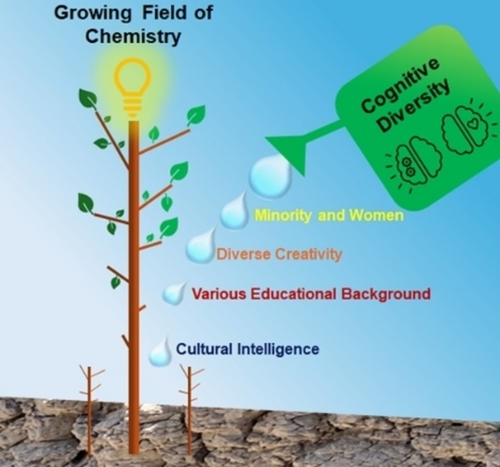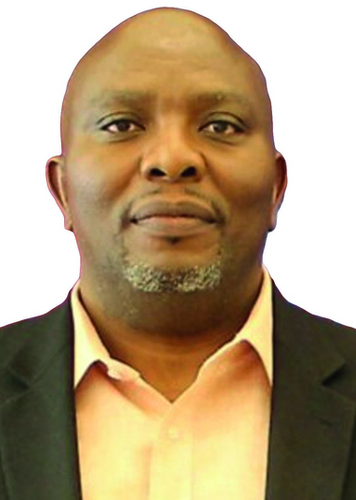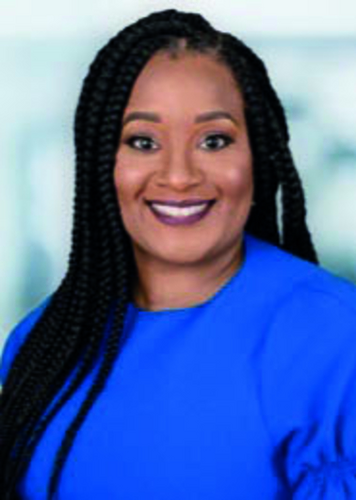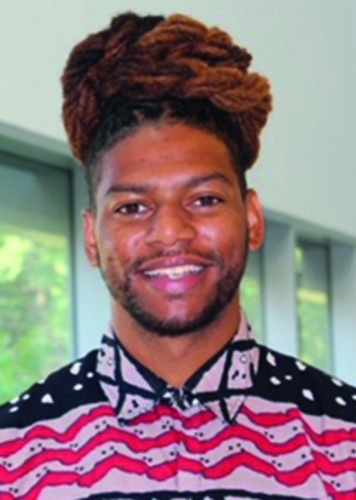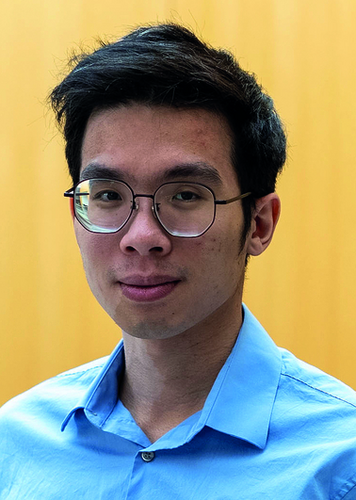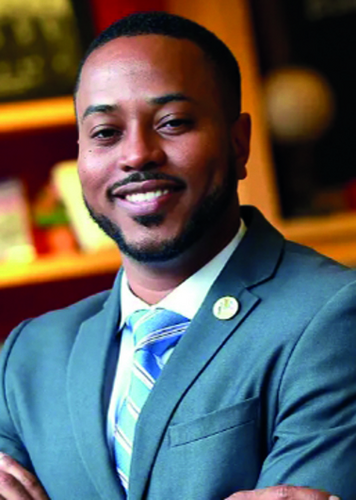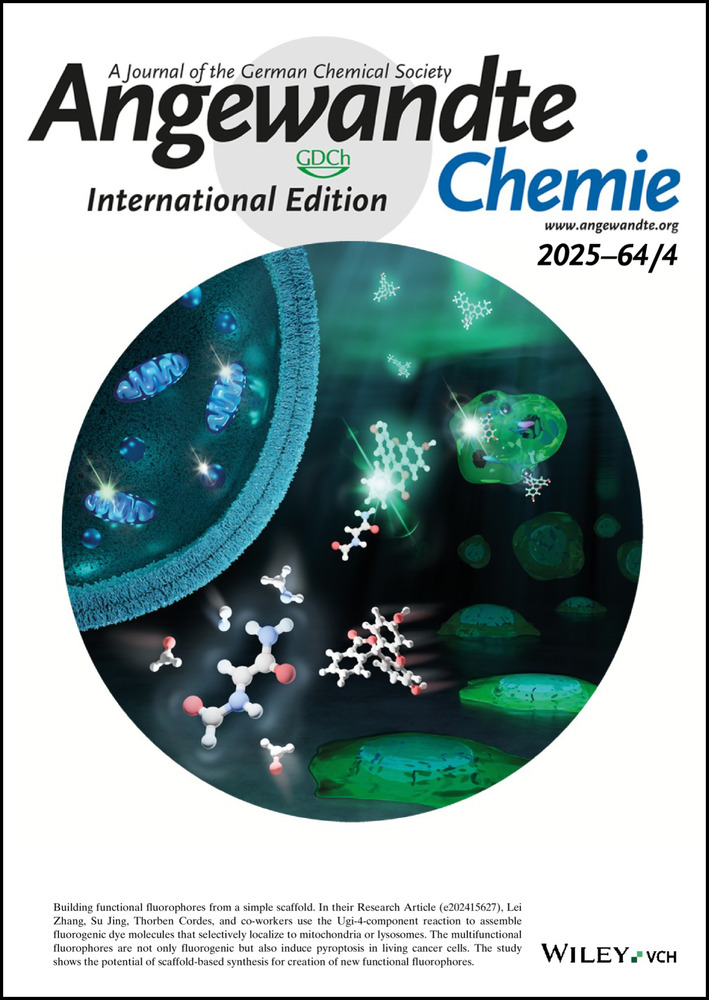Cognitive Diversity for Creativity and Inclusive Growth
Graphical Abstract
Cognitive diversity explores aspects beyond traditional lenses of culture, physical diversity, and merit and into variations in problem solving skills. Understanding aspects that need to be recognized in recruitment for various scientific enterprises will promote higher productivity, efficiency, diversity and heterogeneity in a team.
Abstract
Cognitively diverse teams outperform high intelligence (IQ) teams in problem solving, while businesses with at least one woman in their board of directors financially outperform ones with all men boards. These well-known facts are lost in most academic science enterprises. Herein, we make the case for looking at sources, approaches, and opportunities in expanding cognitive diversity of research teams for high productivity and efficiency.
The U.S. Central Intelligence Agency, like all 17 federal intelligence agencies, is tasked with analyzing and understanding a diverse set of information from, or across multiple sources, cultures, and languages. In Rebel Ideas,1 Matthew Syed notes that for the longest, homophily (tendency to hire, associate or bond with similar others) had precipitated a CIA analysts’ identity that is “white, male, Anglo-Saxon, protestant”. The homogeneity emanated not just from this group being in power, but also from a belief that this elite was the guarantor and protector of American values and ethics.2 Homogeneity is a major weakness to an intelligent agency1, 3 and contributed to major blind spots in averting the 9/11 terrorist attacks.1 In hindsight, lack of diversity precipitated “perspective blindness’ leading the CIA analysts into “mirroring” each other, hence key information was ignored.4 Considering these CIA blind spots, is the practice of science analogously blind? Given the complexity of emerging scientific questions, and need for interdisciplinary multi-investigator efforts, can science learn from the intelligence community? Is there room to diversify the practice of science and how do we achieve functional practical diversity?
Diversity discourse is driven by two main orthogonal points of view viz; i) extrinsic – moral fairness, equity, or justice (ethical); and, ii) intrinsic- performance, efficiency, or output/returns (metrics). The former dominates diversity discussions in academia (especially in the U.S.), while in business enterprises the latter is emphasized. Why the latter? Successful enterprises rely on the strength of their teams, and are open to harnessing a diverse skillset in problem solving to guarantee competitive advantage.5 Interest in a diverse team is rooted in maximizing productivity and efficiency.6 Diversity in problem solving skills (cognitive diversity) emanates from diversity in perspectives7 hence visible homogeneity of a team often correlates with low cognitive diversity. Unconscious bias during hiring (hiring those that are like us) and the comfort of functional bias (ease to conclude and agree) are the main barriers to building cognitively diverse teams.7a Extrinsically cognitively diverse teams can manifest through differences in gender, ethnic, cultural, neurodivergence, sexual orientation, nationality, disabilities, socio-economic, caste, religion, etc. These non-cognitive differences imply that one has experienced life differently hence the nature vs nurture effects to cognition are dissimilar. It is, therefore, our argument that visibly homogeneous groups of people are likely low cognitively diverse. Cognitive diversity of a team is, however, challenging to quantify or objectively measure partly because tools are still being developed. Currently, approaches like the Robertson AEM (Attachment, Exploration and Management of complexity) cube7b that evaluate how people approach change (knowledge processing and perspective), or other emergent scales such as the ATCDS (Academic research Team Cognitive Diversity Scale)8 have been employed to measure cognitive diversity.
Paradoxically, scholarly output (publications) and student outcomes dominate academic research over innovativeness9 (output) and program diversity.10 Such preference is reflected in how poor diversity of talent influences the assessment of a program's quality, pointing to a systematic under-appreciation of cognitive diversity in academia.10 Recent ruling of the U.S. Supreme Court (and some states) illustrates how widely diversity is under-appreciated in academia.11 Cognitive diversity is a critical factor in improving team productivity and efficiency, so it points to the inherent paradox in academia – that is, better programs are desired, but a key pillar is being maligned. To make it relevant, we must redefine “diversity” in academia and in scientific research in general, if creativity and efficiency in research and/or improved student outcomes are indeed our goals.12 Diversity for efficiency calls for a focus on both skills and socio-cultural backgrounds – hence cognitive diversity. Diversity based solely on academic merit (e.g., grades, degrees, or honors) is likely to result in functional bias (peer evaluation shows growth, but objectively it is marginal)13 and a culture that discredits others for not being “good fits”. A major challenge in redefining diversity based on cognitive skills (a product of nature and nurture) is the realization that conversation may take longer to reach an agreement, given that a cognitively diverse group interprets data/information through different viewpoints. Still, the thought process of a cognitively diverse group is bound to give a better solution, especially when faced with a major/grand challenge. Cultural competence14 is, therefore, an essential first step to cognitively diverse teams! A major challenge to cultural competence, however, is “exotifying” or “essentializing” other cultures.14a Hypothesis-driven science enterprises, given its focus on pre-defined goals, are good platforms for diverse cultures to co-work without being offensive.
Chemistry is a central science15 that plays a critical role in many fields, and therefore chemists often have impacts far removed from their discipline. Paradoxically, with its broad scientific reach, chemistry is skewed in the practitioners’ diversity. Hence a monolith of the population has historically had a tremendous impact on science. For example, in 2021, ~65 % of editors and editorial board members and 75 % of authors and reviewers in the ACS journals were men.16 Geographically, Africa is very poorly represented in ACS, and other major chemistry publishers including this journal. Similar, >95 % of Nobel Laureates in chemistry are men,17 with only one being of African (Egypt) descent as of 2022. How then can a monolith of individuals dominate an essential (universal) discipline so much? Does the rest of the world lack creativity, or has our system been skewed in favor of some? Culturally, the latter is true.
Given the benefits of heterogeneous teams, it is surprising that diversity has historically not been central in science. The gatekeepers of prominent chemistry enterprises (CEOs, elite scientists, journal editors, Nobel laureates, etc.) are drawn from a narrow demographic sliver of the pool of potential chemists, a result of what we believe is a narrow and leaky pipeline. Consequently, it is critical for the field to continuously re-invigorate and morph/adapt to sustain relevance and an innovative edge. Efforts to be more cognitively diverse at the decision-making level of the discipline are however commendable – for example, recent effort by this journal to diversify the advisory board18 or elevation of women, Asian, and African scientist to editor-in-chief by major publishers like the ACS.19 Such efforts can only lead to creativity in the discipline.
Most creative innovations tend to come from insurgents, not incumbents,20 hence the need to introduce new talent. The U.S. immigrants for example constitute 16 % of innovators but have contributed ~30 % of innovations, mainly by raising the innovation output of their native collaborators.21 Injecting new perspectives (inclusion) raises the cognitive diversity of teams hence an increased efficiency in problem-solving.22 To maintain an innovative edge, we either i) embrace the ethos of fundamental discoveries and increase heterogeneity in thought, ii) willing or unwillingly out-source,23 or, iii) bridge cultures and differences – by accepting constructive disagreements and eliminating functional bias. The western world's science enterprise may be outsourcing its future by failing to address recruitment, retention, engagement, and diversification needs. A meritocratic view of recruitment has led to built-in functional bias and disenfranchisement of a sector of the population – the underrepresented. We highlight challenges to sustainable recruitment and improved/sustained innovation by; i) making the case for diversity by highlighting that it is self-defeating not to have cognitively diverse teams. ii) We then introduce the need to look for alternative pathways to qualified practitioners of the art and, therefore, encourage breaking down meritocratic gatekeeping, elitism, and systematic biases. More specifically, we argue against unconscious bias in hiring and emphasize the contextualization of merit-review to capture circumstance-weighted achievements. This weighting is especially important in overcoming asymmetry in resource distribution. iii) Admission into the pool, however, is just the first of a set of necessary steps which include eliminating bias in funding, promotion, publishing, and mentorship practices.24 Highlighting the diminishing number of women, and in particular women of color, in the tenured ranks in the U.S. illustrates how systematic biases exclude marginalized groups from the profession. Similar biases in funding and/or support from a very early age are one of the root causes of “spirit murder”25 – the suffocation of drive, a generator of internal dissonance that culminates in exiting the profession. In this light, we recommend a functional evaluation of where the profession ought to be and a correction of the path in training from high school to when these students are science practitioners. For clarity, we offer three often ignored pathways to bringing new perspectives to scientific research in general. First, we highlight the plight of minority women stars, then address the non-classroom qualified experts of the trade, and finally provide a path to commitment and sustenance of the pipeline by paying attention to early pedagogy. Furthermore, we argue that engaging and embracing immigrants/international temporary colleagues is a rich training ground in cultural intelligence and cognitive diversity.
Solution 1: Sustenance and Commitments: As many science and engineering programs seek to diversify their faculty, students, and staff, they often look to act for the future rather than adequately examining their past. While acknowledging the need to improve appreciation of differences across race, class, ability etc., is commendable, a prerequisite for inclusion is comprehensively explicating the people, practices, and policies that have created cultures of exclusion. Otherwise, what may be characterized as an inclusive learning environment is a setting where people with differences are asked to accommodate the dominant norms. Science/engineering education or teaching and learning consists of multifaceted power dynamics that have been relegated as insignificant26 despite their inherent influence on our ability to engage in the knowledge transfer power of education. Therefore, these power relationships and the way they influence cognition need to be made explicit to redress past and present harms that continue to inhibit who can be an engineer/scientist and whose intellectual contributions are most valued.
The mechanisms of exclusion in science and engineering are very complex and are not simply numerical representations. Indeed, the extent of innovative knowledge production is at stake. Many scholars have provided insight into the consequences of not fitting into the dominant cultural norms of engineering27 at the undergraduate and graduate levels. However, more discussion is needed about the costs to individuals, the engineering community, and broader society when the humanity and intellectual contributions of certain groups are devalued.28 The needs and perspectives of marginalized people should be central to efforts to make STEM more equitable and just; yet these endeavors are truly beneficial to all people. Furthermore, the innate socio-technicality of STEM suggests knowledge of how we solve problems for people, with people, and as people, is essential to excelling at our work.29 The awareness and use of sociological knowledge is a central dimension of what it means to engineer, acting in concert with the ability to manipulate the natural world in service of itself and humanity.30
Problem-solving is a vital component of STEM, and the way students are recruited, assessed, and supported in their educational journey is a gigantic problem requiring a solution. Recruiting people from demographics that have been historically excluded is a part of that solution. This should, however, be preceded by abolishing the ideologies and patterns that have sustained educational inequity.31 Retention mechanisms focused on supporting people from historically excluded demographics would do well to avoid viewing these people as deficient and responsible for their own exclusion, choosing instead to advocate for transformation of the dominant paradigms that treat difference as a flaw (higher cultural IQ). Cosmetic changes, such as changing who is present, are inadequate without shifting the values of what knowledge and skills are important, how competency is assessed, and what problems within society are deemed worthy of addressing. We are calling on our colleagues to re-invigorate the education experience at all levels for the preparation of a multicultural, multi-faceted team of problem solvers. To achieve this, inclusive pedagogy and promotion criteria are needed with institutional cognitive diversity being a critical Figure-of-merit as opposed to rankings that favor resource-endowed institutions.
Solution 2: Globalized/Diversified Recruitment: Talent is everywhere but resources are not, hence an asymmetry in performance or productivity for equally talented people.32 Differences in resources can lead to the development of unique problem solving skills. For example, about 40 % (67 % in 2023) of recent U.S. Nobel prize winners in science are immigrants.33 Similarly, immigrants contribute to >30 % of U.S. inventions, however, the productivity of an immigrant is more enhanced by collaboration with a native than with another immigrant.21 This is a testament to the power of diversity of perspectives in science! Higher education systems around the world (especially high ranking) have the privilege of drawing diverse talent from across the globe. Looking beyond the obvious social diversity that these people bring, the different backgrounds, connections, academic history, and cultures has repercussions on cognitive skills that are brought to U.S. institutions.34 These hidden unevaluated skills, however, are often clouded by the immediate cultural differences (language, mannerisms, physicality, etc.) which results in a misunderstanding of the “diversity” that ought to be harnessed to maximize productivity. Cognitive diversity is difficult to evaluate and is often dismissed due to the high entry barrier to building a common understanding – often captured as difficult conversations. In the context of STEM, international talents from different levels (undergraduate, graduate, or postgraduate) are derived from a diverse curriculum and grow in disparate cultures.35 Exposure to a broad set of chemistry courses (library smart) due to lack of equipped teaching laboratories (e.g. in global south) may introduce one to many topics a fete not feasible in an experiential/interactive heavy setting (e.g. U.S.). The former can favor imagination and memorization while the latter can favor more applied thinking. Convergence of the orthogonal “library smart” and “bench smart” talents can potentially enhance creativity and efficiency in a team.36 In some cases, asymmetry in training can be from the same country, e.g. native American reservation schools vs sub-urban schools in north America. Immigrants (national or international), being away from home, are highly mobile (hence adaptive to labor demand and supply),37 and being in a new environment have to adapt to survive and therefore redefine local challenges in their own way. The latter can be the basis of new local solutions.
Exemplar 1: Alternative Recruitment Pathways: The U.S. Bureau of Labor Statistics estimates that employment in chemistry-related occupations is expected to grow by 6 % between 2019 and 2032.38 As the demand for chemists continues to rise, it is becoming increasingly important to expand the pipeline of workers with the necessary skills to excel in these roles.
While most chemists have a bachelor's degree or higher, there are many related fields where most workers do not have a four-year degree but have acquired highly relevant skills to the chemistry profession through work experience. For example, a majority of workers in the U.S. employed as chemical equipment operators, chemical technicians, and quality control inspectors have completed high school (and sometime some college) but do not have a four-year degree, yet they regularly perform tasks such as analyzing data, conducting experiments, and working with complex equipment, all of which are highly relevant to the chemistry field.38 These workers who are “Skilled Through Alternative Routes” so-called STARs in the economics literature,39 can play a critical role in addressing current and projected shortages of workers in the broader chemistry enterprise, while also increasing diversity and inclusivity. Tangentially related arts, like glass blowing, are essential in the chemistry enterprise yet these experts are often not considered “chemists” even though their skills are relevant to the discipline.
Traditional hiring methods and graduate school admissions requirements that prioritize formal educational credentials over other forms of experience and training, often, screen out STARS. According to a recent report by the National Science Foundation, underrepresented minorities (URMs) account for only 16 % of the science and engineering workforce, despite representing 30 % of the overall U.S. workforce. However, many of the source occupations where STARs work, such as chemical equipment operators and environmental science and protection technicians, have higher proportions of URMs than the rest of the science and engineering workforce. For example, 33 % of chemical equipment operators are URMs, compared to 17 % of chemists and materials scientists.38, 39 By tapping into this pool of STARs, the chemistry field can create a more diverse and inclusive workforce while addressing projected shortages of workers. To support this inference, it is well known that veteran (ex-military) students on average have a 0.4 higher grade-point average than students coming from high school. Veterans also have a 72 % success rate compared to 60 % from their non-military peers.40
By expanding the pool of potential workers to include STARs, the chemistry field can help meet demand and ensure continued growth and success. The approach to hiring STARs as a pathway into Chemistry mirrors the longstanding tradition in many European countries of using apprenticeships as labor market pathway. For example, BASF SE, Ludwigshafen, Germany has a robust apprenticeship program41 that is now being replicated in the U.S. by companies like Shell42 in partnership with community colleges.
Exemplar 2: Minority Women Stars: The case for black women.
The term “pipeline” is often used to describe the progression of students through the education system. In contrast, the concept of a “leaky pipeline” refers to the departure of students from underrepresented groups. The experiences of Black women in STEM serves as a compelling example of the significance of pipeline issues. In 2019, U.S. women from underrepresented minority groups earned a higher proportion of science and engineering degrees (S&E) at all levels than their male counterparts.43 Specifically, Black women earned 52.8 % of associate degrees, 70.4 % of technology associate degrees, 60.9 % of bachelor's degrees, 62.5 % of master's degrees, and 69.1 % of doctoral degrees awarded to individuals identifying as Black. Despite these achievements, as of fall 2019, Black women represented only a meager 2.1 % of tenured faculty across all fields in U.S. colleges and universities.44 The underrepresentation of Black women is even more pronounced in chemistry-related fields. Open Collaborative in Chemistry (OXIDE), in their 2017 report, revealed that of approximately 2200 tenured/tenure-track faculty at the top 75 U.S. chemistry departments based on research expenditures, only 8, a mere 0.4 %, were Black women.45 Similarly discouraging patterns are observed in other STEM fields.
Consequently, Black women pursuing STEM majors often lack relatable role models, which negatively impacts their sense of belonging and reduces their retention in these fields.46 Additionally, these students face unique challenges due to factors like “solo status”, “stereotype threat”, and other biases that undermine their ability to succeed in academia.47 Accordingly, it is important that institutions provide all faculty with the skills needed to mentor students of color. We also need to build pathways for success, not pipelines, so that students have opportunities for re-entry at various stages.
Solution 3: Conclusion–Proactive Intentional Participation: Having understood the need for cultural intelligence and cognitive diversity, current practitioners of the art, inspired by need for more productivity, should intentionally pursue cognitively diverse teams. Academia presents a plethora of opportunities to establish high-performing cognitively diverse teams. Recruitment and outreach into local disadvantaged schools is key to rewriting the narrative and encouraging future mentors into the profession (external motivation). These recruitments can also help introduce new scientific problems in otherwise blind investigators (internal motivation). Similarly, visiting scientists, internships, and sabbaticals are a great way to temporarily inject new talent to a team and to learn from them while opening potential translation of the research to otherwise unexplored markets/fields. Adopting weighted meritocracy where achievements are put in context will allow for the gifted problem solvers to join the discipline and eliminate system bias in favor of the privileged.
Disclaimer
The opinions expressed in this publication are the view of the authors and do not necessarily reflect the opinions or views of Angewandte Chemie International Edition/Angewandte Chemie, the Publisher, the GDCh, or the affiliated editors.
Acknowledgments
This work was supported in part by the NSF-STC Center for Complex Particle Systems (COMPASS) through an NSF grant award No. 2243104.
Conflict of Interests
The authors declare no conflict of interest.
Open Research
Data Availability Statement
Data sharing is not applicable to this article as no new data were created or analyzed in this study.
Biographical Information
Prof. Thuo is a professor at North Carolina State University. He obtained a Ph.D. from University of Iowa followed by a postdoctoral fellowship at Harvard University. His research focus is on surface, interface, and thermodynamics in soft matter for frugal innovation. He is a co-host of ICAN-X talks and the deputy director at the Center for Complex Particle Systems.
Biographical Information
Prof. Jeffries EL is a Professor of Chemistry University and the Senior Associate Dean of the Graduate School of Arts and Sciences at Boston University. She earned her Ph.D. from The George Washington University and completed a postdoc at Carnegie Mellon. Her research focuses on the development of organic semiconductors for electronic devices. She advocates for diversity in STEM and has held leadership roles in various scientific organizations and programs.
Biographical Information
Prof. James Holly, Jr. is an Assistant Professor of Mechanical Engineering and core faculty member within the Engineering Education Research program at the University of Michigan. His scholarship focuses on the ways disciplinary knowledge (i.e., mechanical engineering) reinforces racialized power, and the role of culture and cognition in teaching and learning.
Biographical Information
Dr. Martin is a postdoctoral scholar at North Carolina State University. He obtained his Ph.D. from Iowa State University in 2020 followed by postdoctoral studies at Lawrence Berkeley National Laboratory. His research focuses on metastable materials, out-of-equilibrium dynamics and phase transitions.
Biographical Information
Prof. Peter Q. Blair is an Associate Professor at Harvard University where he co-directs the Harvard Project on Workforce. He received his PhD in Applied Economics from the Wharton School and his MA in Theoretical Physics from Harvard. His research work focuses on the role of credentials in labor market mobility.



